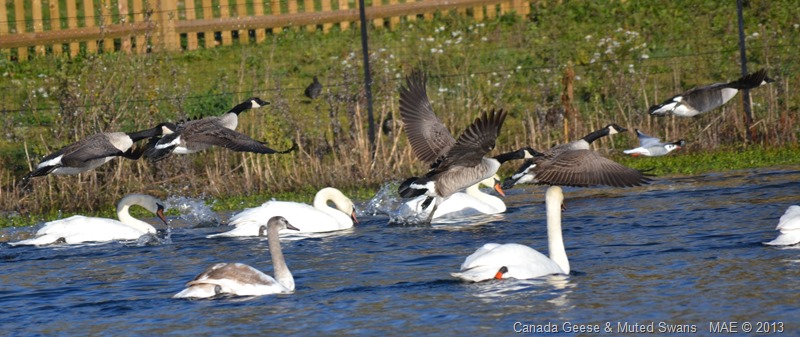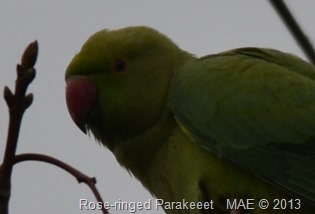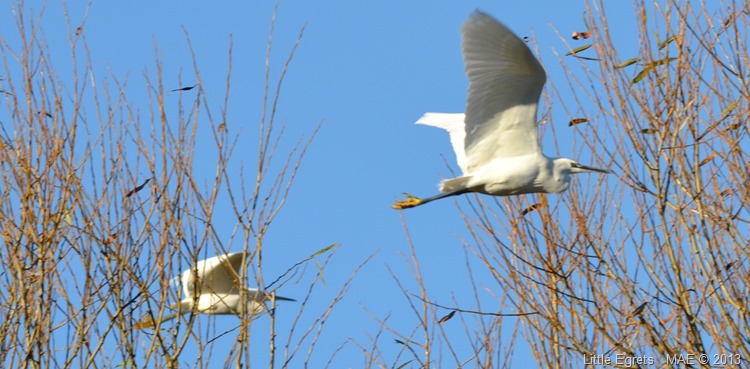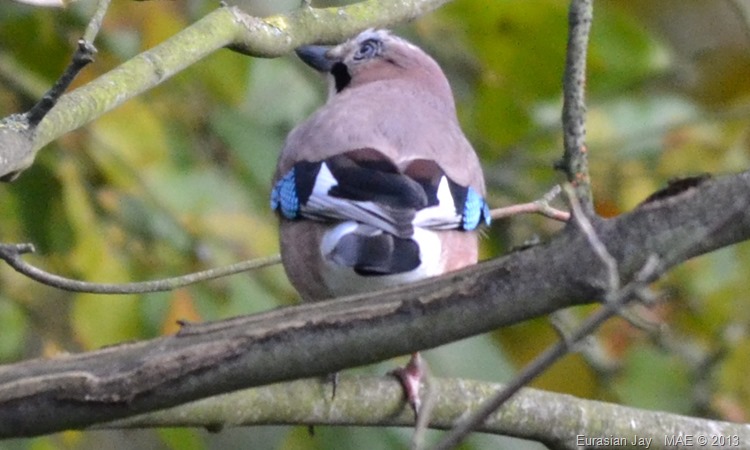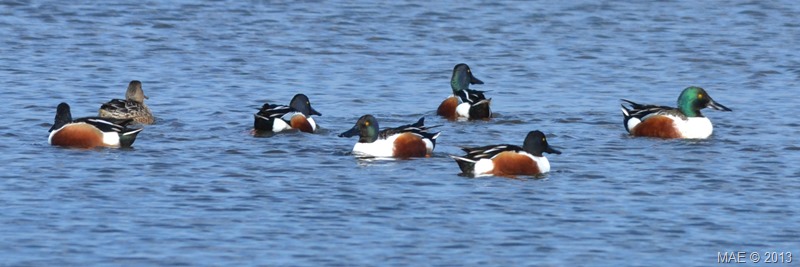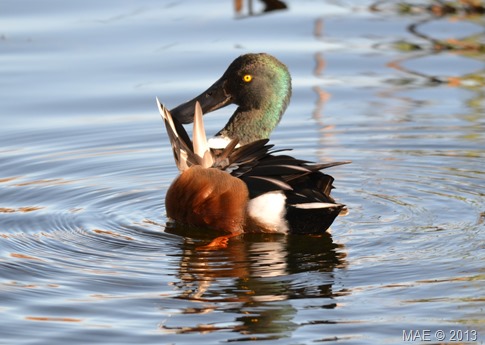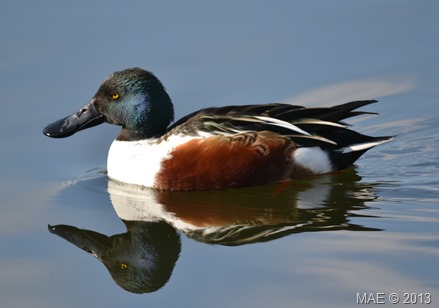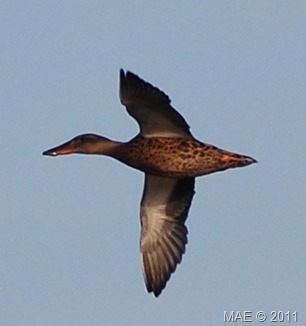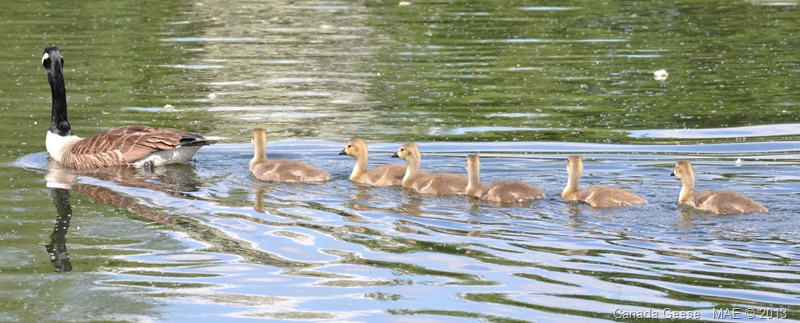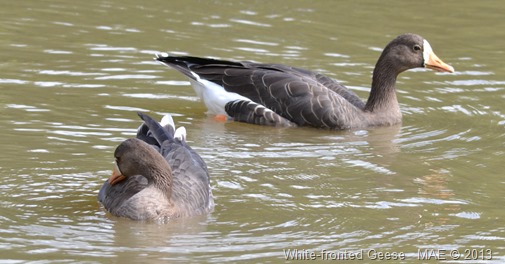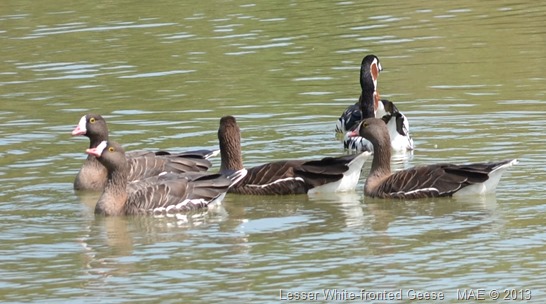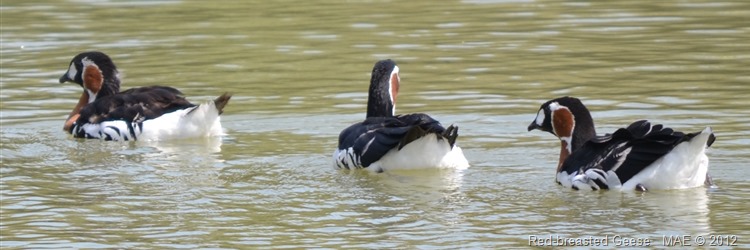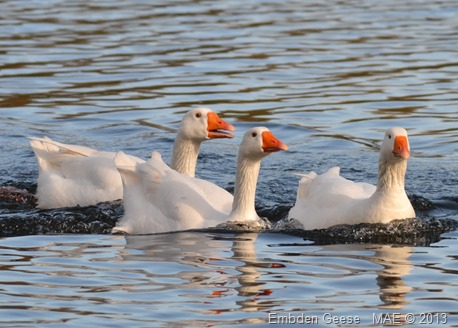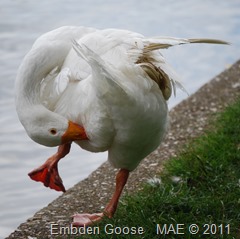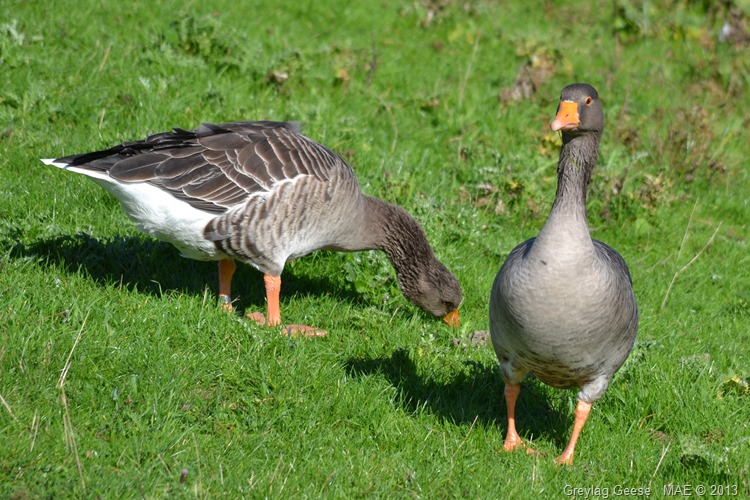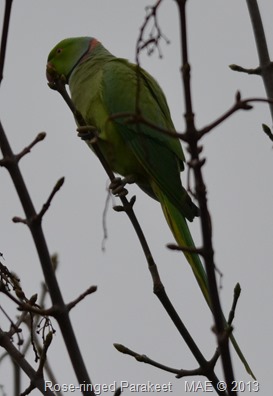 This weekend was full of surprise encounters. First a little story. In 1951 the Hollywood movie “African Queen”, with Humphrey Bogart and Katherine Hepburn, was partly shot at Isleworth Studios in Middlesex. The story goes that a pair of Rose-ringed Parakeets (Psittacula Krameri) escaped and settled in the surrounding neighbourhood. Whether this is true or not I don’t know, but nowadays there are around 50,000 of these birds flying around in London.
This weekend was full of surprise encounters. First a little story. In 1951 the Hollywood movie “African Queen”, with Humphrey Bogart and Katherine Hepburn, was partly shot at Isleworth Studios in Middlesex. The story goes that a pair of Rose-ringed Parakeets (Psittacula Krameri) escaped and settled in the surrounding neighbourhood. Whether this is true or not I don’t know, but nowadays there are around 50,000 of these birds flying around in London.
This afternoon I saw about three in a tree in my garden, and they stayed long enough for a decent shot.
They normally fly in groups of at least 5 and make quite some noise in the air.
But it is always a funny sight to see these cute birds in your garden. You feel in a different world, just as Humphrey (who won an Oscar for Best Actor for his role) and Katherine.
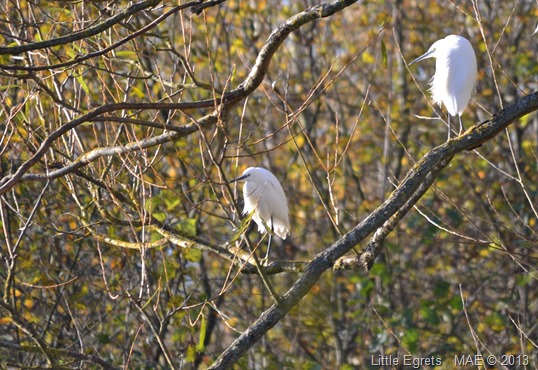 Last week I saw a handful of Little Egrets (Egretta Garzetta) in a tree near Ruislip Lido. In the past I had seen just one every now and then in that area, but I was presently surprised to see so many together. Of course I had to revisit the actual site and so I did yesterday. The surprise was even bigger, since about a dozen were flying up and down the trees.
Last week I saw a handful of Little Egrets (Egretta Garzetta) in a tree near Ruislip Lido. In the past I had seen just one every now and then in that area, but I was presently surprised to see so many together. Of course I had to revisit the actual site and so I did yesterday. The surprise was even bigger, since about a dozen were flying up and down the trees.
Unfortunately, you can not approach them totally silent and they flew away the moment I came too close. But waiting a while (as quiet as possible) helped a little in making these shots.
I was even able to take a picture of two of them in flight as is shown below. I will definitely return to this “scene of crime”.
Talking of birds in flight: I also took some shots at the Ruislip Lido of three Canada Geese (Branta Canadensis) and a Muted Swan (Cygnus Olor) in full flight. It is always a thrill to see these shots being sharp enough to share (in stead of deleting them straight away). The picture at the beginning of this blog showed the occasion for the flight: there was some food on offer further down the Lido…and they all had to tuck in.
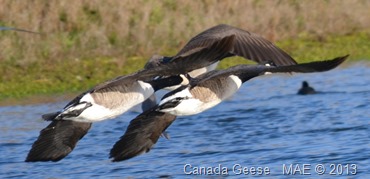 | 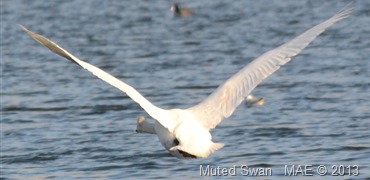 |
I will finish this blog with a picture of a Eurasian Jay (Garrulus Glandarius) that seemed to be as surprised as I was this weekend of the variation of birdlife, just around the corner.
